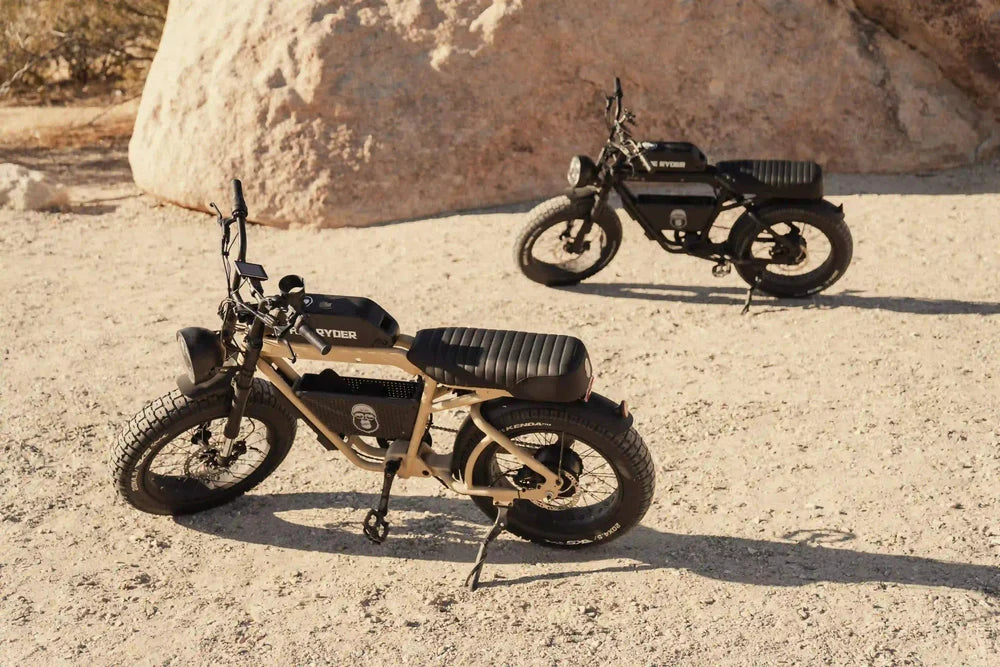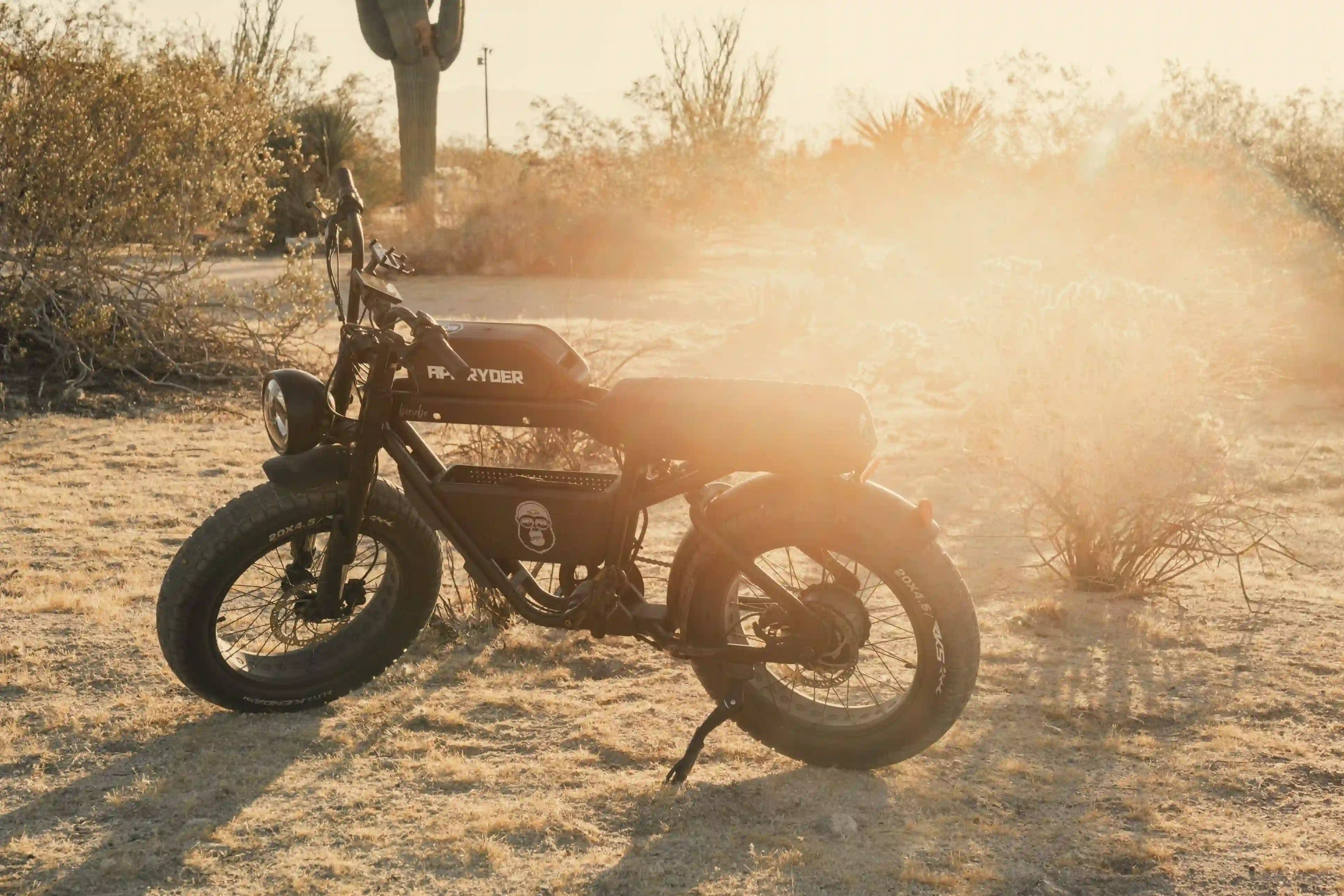E-bikes are the future of commuting and cycling because they have that perfect mix of efficiency, technology, and eco-friendliness. E-bikes appeal to cyclists, eco-conscious commuters, and technology enthusiasts alike since they offer an innovative way of reducing carbon footprints without losing the essence of the ride. But how do they work? Let's explore their mechanics and functionality.
The Basics of E-Bike Mechanics
Gaining an understanding of the basics in e-bike mechanics is paramount to appreciate how these innovative vehicles work. The electric motors, batteries, controllers, and sensors combined together in an e-bike ensure a smooth and efficient ride while amplifying the traditional cycling.
Electric Motor
The primary input of the electric motor works at the centerpiece of an e-bike and offers pedaling assistance for smoother and more enjoyable riding uphill or on any difficult terrain. Of the motors, the most famous ones are hub cars because of their simplicity and reliability. These motors are integrated into either the front or rear wheel independently to turn the wheel from the chain. Hub motors also require very minimal maintenance; thus, they are very practical for casual riders. Still, their fixed position can inhibit performance on steep inclines because more power and torque distribution are needed.
Mid-drive motors are a better option for those riders who require versatility and performance. These inbuilt engines into the crankset power the chain of the bicycle and can thus more closely imitate the pedaling dynamics in their natural look. It helps balance the weight distribution for enhanced handling-featuring mid-drive motors, especially ideal on steep hills and rough grounds. Friction drive motors remain the rarest-a very light system indeed that powers a bicycle by directly acting on one of the tires. Weaker compared to the hub or mid-drive options, but still more straightforward and less intrusive solutions for riders wanting some help.
The Battery
The battery is the powerhouse of an e-bike and supplies the required energy to run the motor efficiently. Most lithium-ion batteries are very well known in the market because of their light weight and long life. Capacity in watt-hours determines the range of the e-bike. More high-capacity batteries are found in products like Ape Ryder's Gibbon e-bike, perfect for longer commutes or adventure rides where one can go a lot further without frequent recharges.
Battery placement also plays a significant role in the riding experience. Integrated batteries, often within the frame, provide a sleek, modern look and enhance the overall balance of the bike. Rear-mounted batteries offer practical convenience, with easy access and handling. Charging times usually range from 3 to 6 hours, and many models have removable batteries that enable users to take them indoors for charging or to protect them from theft when parked outdoors.
The Controller
It's the brain of an e-bike a controller responsible for how much power actually flows out from the battery to the motor. In simple words, this would make sure there is a responding motor based on your demands and make your pedaling smooth and effective. Signals come in via various sensors that control it, with the rider needing a quick response when dealing with heavy roads or long-standing assistance at every casual ride.
Key features of the controller include the pedal assist sensors that measure the pedaling intensity and adjust accordingly the output of the motor. This system provides a natural and intuitive cycling experience where riders feel supported without losing traditional pedaling. Other e-bikes have a throttle that enables the rider to engage the motor directly without pedaling. This feature is priceless for fast starts in city traffic and on stop-and-go driving, adding comfort and versatility to the functions of an e-bike.
The Display
Most e-bikes have a display mounted on the handlebar that gives the rider important information to improve their riding experience. The display lets users monitor the battery level in real time to plan rides with an idea of how much power is left so as not to get stranded. Riders can also track their current speed and total distance traveled, making it easier to assess their pace and performance during commutes or leisure rides.
Besides basic metrics, the display points out settings that make a ride personalized. For example, assistance levels denote how much the motor supports the rider, in which a rider can adjust to different terrains or save battery power when needed. Most e-bikes also have modes of riding, like eco for efficiency and sport for maximum performance, that allow users to tune their ride according to their preference or the demand of the journey.
How It All Comes Together
As quickly as you begin pedaling the e-bike, a sensor detects your pedaling attempt and relays the same to a controller. It triggers the controller, which similarly relays strength to the motor, thereby amplifying pedaling energy. It is right here that the clever dating facilitates you up tough hills, prolonged headwinds, and lengthy journeys without problems.
For added comfort, e-bikes with throttles assist you to turn on the motor with a twist or push to do away with pedaling in tough situations. This capability could be very useful both in urban conditions with forestall-and-cross site visitors or in quick achieving speed in crowded situations.
E-bikes marry classic cycling with advanced technology in such a way that it remains a green, effective, and entertaining way to move. Knowing how e-bikes paintings grows appreciation for their design and skills, which in return makes them an remarkable choice for commuters, adventurers, and those eco-aware.









Leave a comment
All comments are moderated before being published.
This site is protected by hCaptcha and the hCaptcha Privacy Policy and Terms of Service apply.